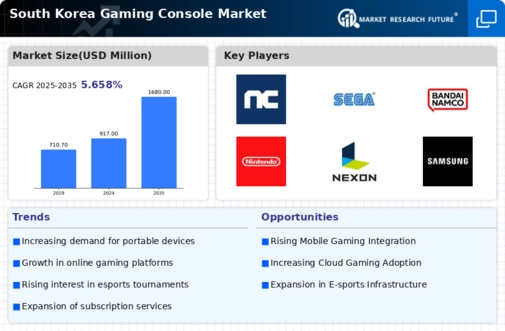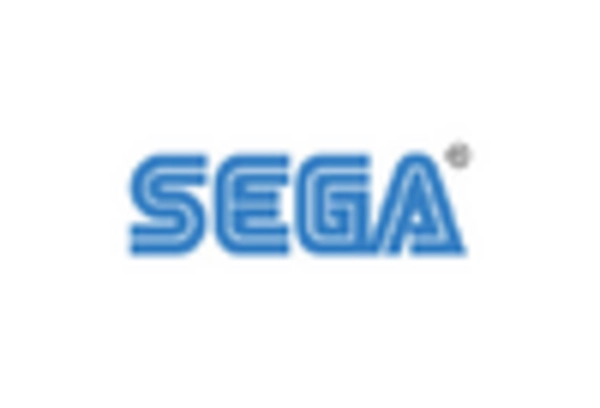The gaming console market in South Korea is characterized by intense competition and rapid technological advancements. Key players such as Sony (Japan), Microsoft (US), and Nintendo (Japan) dominate the landscape, each employing distinct strategies to maintain their market positions. Sony (Japan) focuses on innovation and exclusive game titles, which enhances its brand loyalty among consumers. Microsoft (US), on the other hand, emphasizes its subscription services and cloud gaming capabilities, aiming to create a more integrated gaming ecosystem. Nintendo (Japan) leverages its strong IP portfolio and family-friendly gaming experiences, appealing to a broad demographic. Collectively, these strategies contribute to a dynamic competitive environment, where differentiation is increasingly based on technological innovation and user engagement rather than merely price.
In terms of business tactics, companies are localizing manufacturing and optimizing supply chains to enhance efficiency and reduce costs. The market structure appears moderately fragmented, with several players vying for consumer attention. However, the influence of major companies remains substantial, as they set trends and standards that smaller firms often follow. This competitive structure fosters an environment where innovation is crucial for survival, compelling companies to continuously adapt to changing consumer preferences and technological advancements.
In October 2025, Sony (Japan) announced a strategic partnership with a leading South Korean game development studio to create exclusive titles for its PlayStation platform. This move is significant as it not only strengthens Sony's content library but also enhances its foothold in the South Korean market, where local game development is thriving. By collaborating with local talent, Sony is likely to resonate more with regional gamers, thereby increasing its market share.
In September 2025, Microsoft (US) launched a new initiative aimed at expanding its cloud gaming services in South Korea, which includes partnerships with local internet service providers to improve connectivity. This strategic action is crucial as it positions Microsoft to capitalize on the growing demand for cloud gaming, particularly among younger consumers who prefer flexible gaming options. By enhancing its service delivery, Microsoft may solidify its competitive edge in a market that increasingly values accessibility and convenience.
In August 2025, Nintendo (Japan) unveiled plans to enhance its online gaming infrastructure, focusing on improving user experience and expanding its online community features. This initiative is particularly relevant as it aligns with the rising trend of social gaming, where players seek more interactive and community-driven experiences. By investing in its online capabilities, Nintendo is likely to attract a broader audience and retain existing users, thereby reinforcing its market position.
As of November 2025, current trends in the gaming console market include a strong emphasis on digitalization, sustainability, and the integration of AI technologies. Companies are increasingly forming strategic alliances to enhance their technological capabilities and market reach. The competitive landscape is shifting from price-based competition to a focus on innovation, technology, and supply chain reliability. As these trends continue to evolve, differentiation will likely hinge on the ability to deliver unique gaming experiences and robust technological solutions.

















Leave a Comment